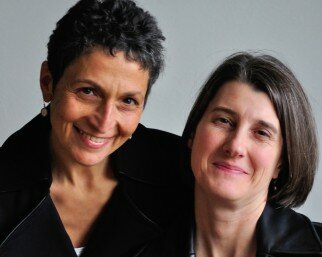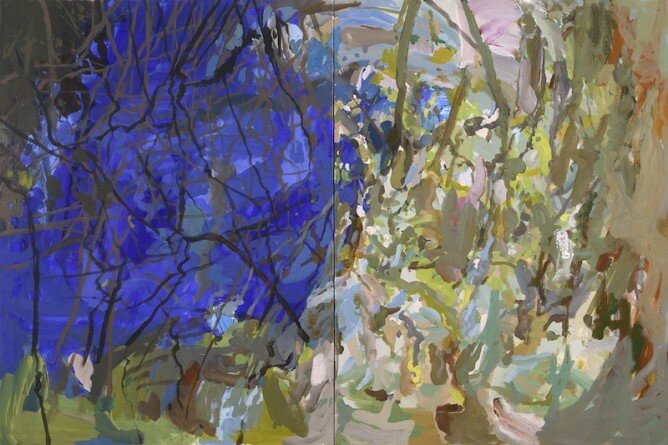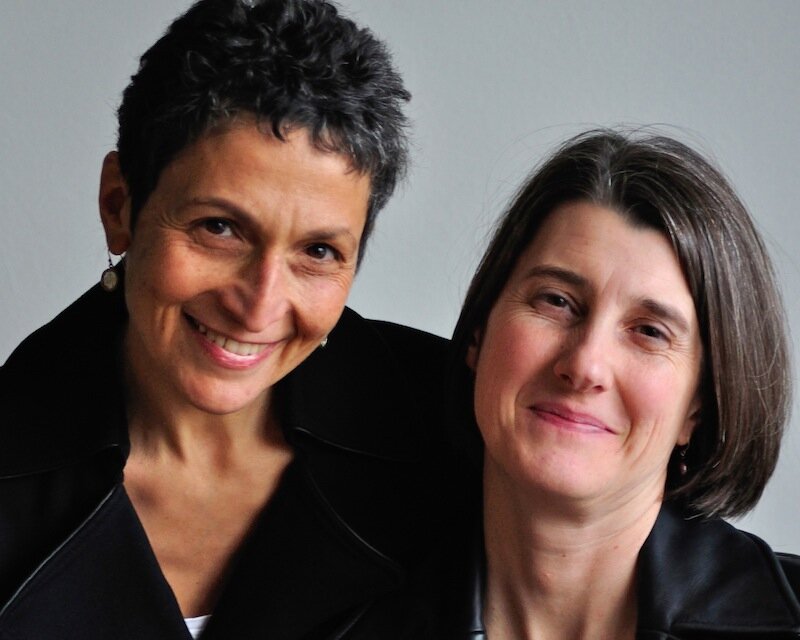
To honor retiring artistic director Toby Saks, Seattle Chamber Music Society’s Commissioning Club asked composer Laura Kaminsky to create a work to be premiered during this year’s Summer Festival. Friday was the night.
Kaminsky spoke in the pre-concert recital time about the genesis of her work, Horizon Lines, with illustrations. She explained that the trio of piano, oboe, and bassoon came about after consultation with Saks, who wanted an unusual combination of instruments to contribute to the literature for those instruments, rather than yet another string quartet.
Further, Kaminsky’s partner, painter Rebecca Allan, was working on an exhibition for the SAM Art Gallery which was going to run at the same time. With Saks’ okay, they decided to merge the two projects, and the final result is a trio with a fourth aspect, a film of Allan’s sketches and photos of the natural world of water which became the theme for both of them and which was produced by John Feldman. Allan’s completed paintings are on display at the SAM Art Gallery now until August 5, also titled “Horizon Lines.”
Kaminsky’s work is divided into six parts, musical and pictorial evocations of water at places important to them: Manasota Key; Spuyten Duyvil, Ice Floes; Wappinger’s Creek, Hudson River Valley; The Fells, River Caldew, Approaching Storm; Ebey’s Landing, Swallows; and Amagansett, Twilight.

Not that you could recognise more than glimpses of these places from the film. While there are a few photos which merge into and out of painted sketches, greenery, water, trees, sand, rocks, and floes are mostly abstract impressions. I grew up in the fells of England’s Cumbria, and one moment of instant recognition was a photo of a rocky stream which could have been one of a thousand similar ones in that area.
Recognition was not the point. It was the overall impression of moving water in all its guises that came through clearly in the film, perhaps less so in the music.
Kaminsky’s music is spare and clear, with the three instruments each going its own way in easy juxtaposition yet largely separate, more impressionistic than melodic, often dissonant. The first movement is for the winds only, the second for piano only. Here, with strong chords and flittery-skittery moments, one could hear and see in the mind’s eye the ice floes heading down river, crashing into each other and shedding sparkling splinters at the junction of the Harlem and Hudson Rivers, as Kaminsky and Allan described them earlier, but one had to have had the word description first.
In the third, the creek movement, the typical constant sound of rippling, rushing water pervaded all the instruments, highly articulated, cheerful, never stopping, getting more violent as presumably the stream reached a rapid.
In the fourth, where the bright colors of Allen’s sketches surprised me but the rocks did not, I thought I heard from the oboe, maybe, a curlew, a bird whose plaintive call can be heard all summer long in the fells.
I’d need to, I’d like to, hear this again, perhaps with my eyes shut, to pick up more. Suffice it to say that while the whole work is maybe 30 minutes long, the interest never flagged. Pianist Craig Sheppard, bassoonist Seth Krimsky, and oboist Ben Hausmann gave it a fine performance.
The rest of the virtually sold out concert at Nordstrom Recital Hall included two wonderful performances, one of Boccherini’s bright and lively Quintet in C Major with violinists Nurit Bar-Josef and Amy Schwartz-Moretti, violist Richard O’Neill, and cellists Bion Tsang and Godfried Hoogeveen. Boccherini was a cellist and always gave himself a starring part, so this could have been described as a work for cello and string quartet with Tsang having Boccherini’s prominent part.
The performance of Brahms’ Quartet for Piano and Strings in A Major, the one that was Clara Schumann’s favorite, left one thinking the players, violinist Joseph Lin, violist Cynthia Phelps, cellist Edward Arron and pianist Jeremy Denk, had been working together for months if not years, so intuitive and close was their ensemble, so expressive and thoughtful their interpretation.
There’s a concert tomorrow, Sunday and then performances Friday and Saturday next week ( tickets: 206-283-8808 or online), a change from the regular schedule which returns the following week.
